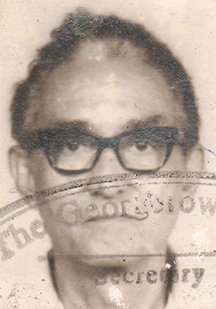The following is an edited version of a tribute given by Major General (rtd) Joseph G Singh at St Andrew’s Kirk, Georgetown, on June 26.
Born on June 25, 1914, Cecil Carl Cunha, MS transitioned last Friday, five days before his 100th birthday. Exactly 10 years ago (June 2004), I published a book titled The Mataruki Trail, which is a record of the work of the Boundary Commission that established the Tri-Junction Point at the head of the east Kutari River, which the joint survey team of the British and Dutch in 1937, verified through detailed on-the-ground surveys, was the source of the Corentyne River – the border with Suriname.
In my research for the book, using the notes of the diaries compiled by Major Arthur Hudson of the Royal Engineers, I came across a photograph of the young communications officer, Cecil Cunha, a wireless telegraphist attached to the Boundary Commission from 1935 to 1938. The photograph of young Cecil, 21 years old, was taken in 1935 outside of the British Boundary Commission Camp at Camp Oronoque in the New River. He was dressed in his field khaki outfit, short pants and long socks, kneeling on one knee with his left hand on his wireless set.
I included it in the book at page 106. Any visitor to Cecil’s residence at 114 Akawini Street, Campbellville, from 2004 to his passing last Friday, must have been shown that book and the photograph and listened spellbound to Cecil’s experiences with the Boundary Commission. He was one of three dedicated wireless operators attached to the Boundary Commission and his

